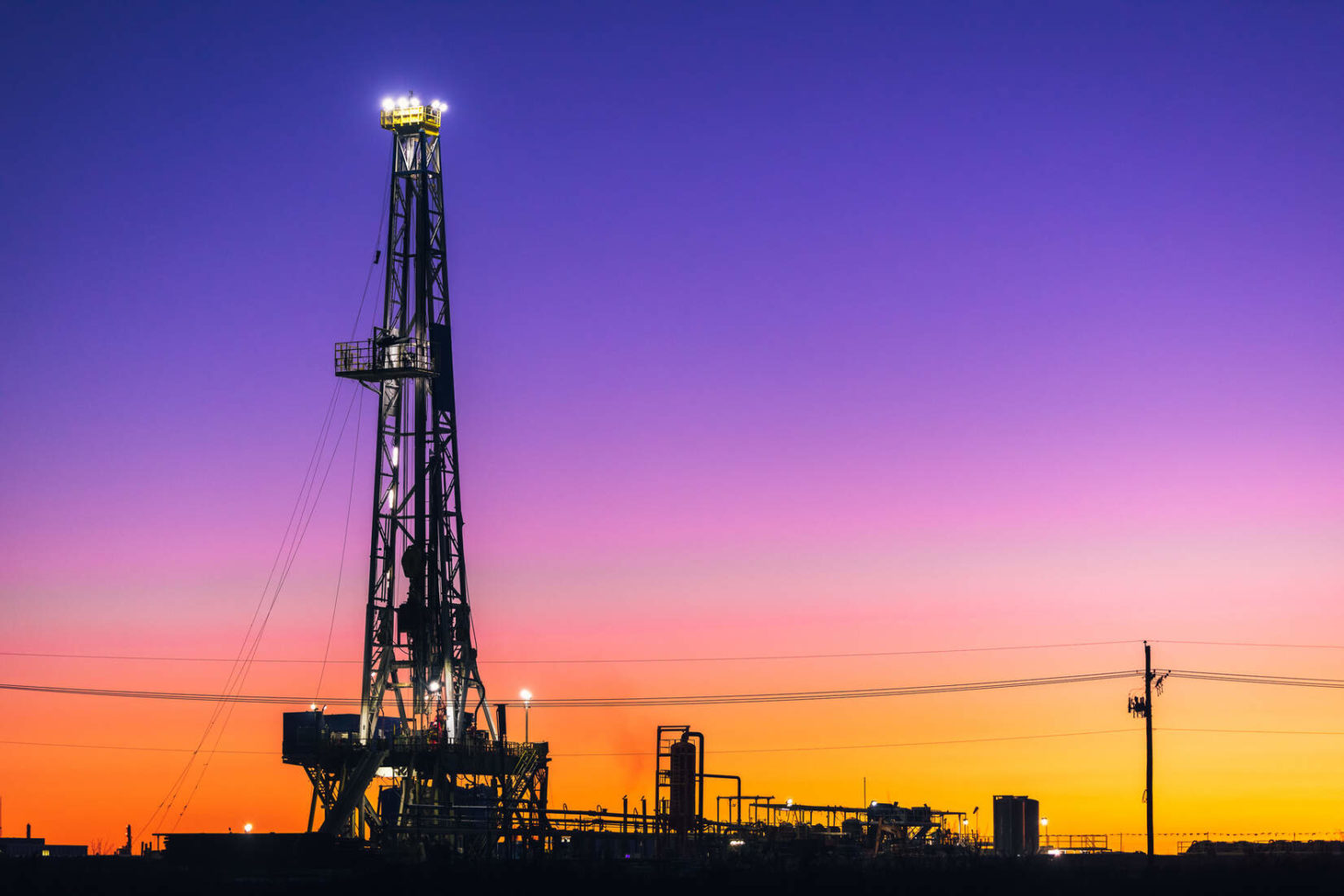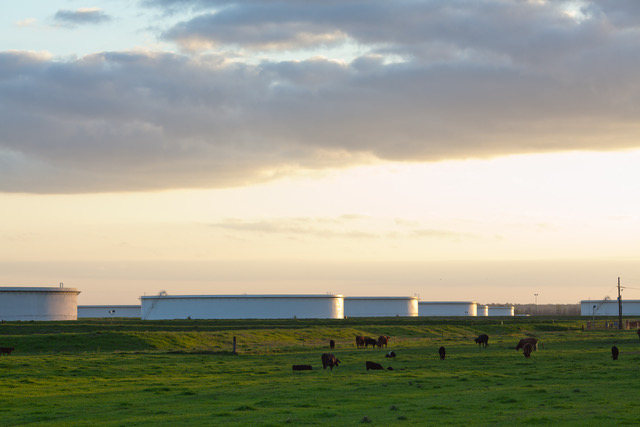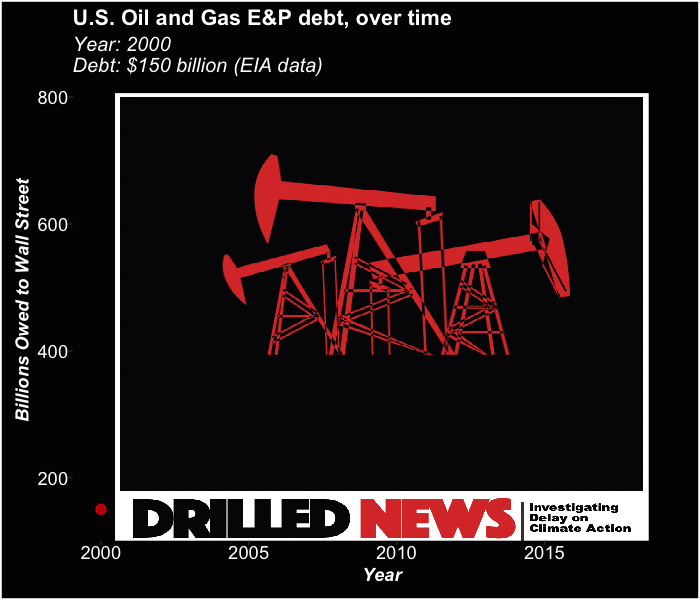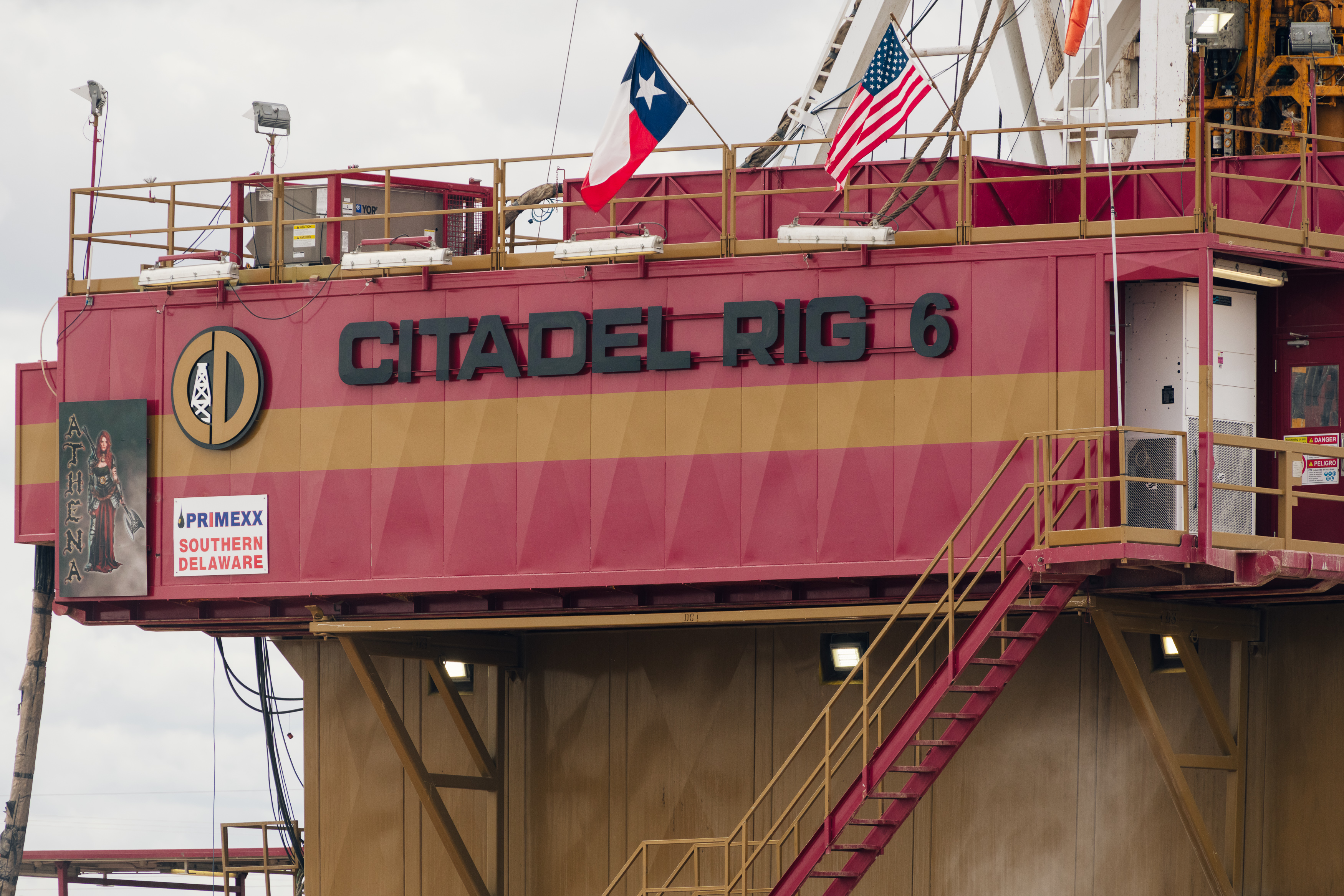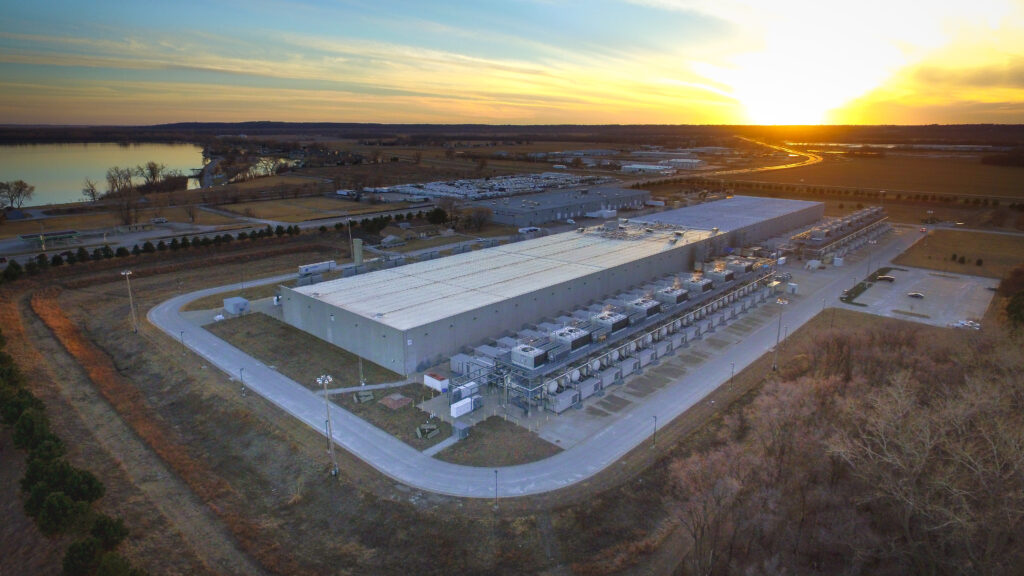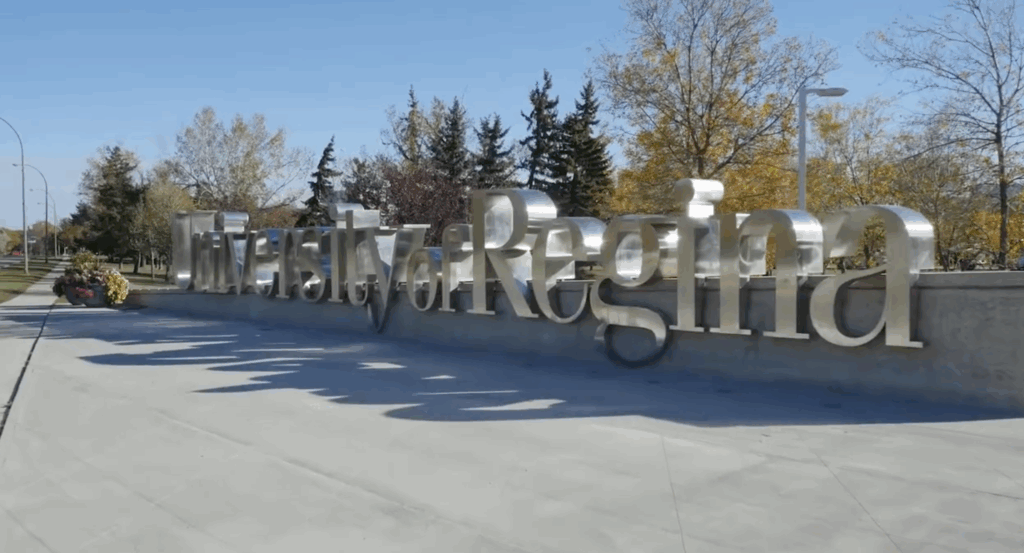By Amy Westervelt, with additional reporting from Emily Gertz, Drilled News. Originally published on Drilled News.
Recently, President Trump and Treasury Secretary Steve Mnuchin both made clear their intentions to include some sort of bailout for the oil and gas industry as part of the federal government’s emergency economic response to the coronavirus pandemic.
At this writing Congress isn’t playing along, at least not directly. Republican-supported provisions to pump $3 billion in oil purchases into the nation’s Strategic Petroleum Reserve (to fill it “right up to the top,” as Trump termed it in mid-March) were struck from the $2 trillion emergency stimulus bill that the Senate passed late Wednesday night, and just hours before that vote, reports Politico, they vanished from the House’s companion bill as well. Neither bill targets the fossil fuel industry by name for any other bailout, either.
But “the deal specifically sets aside $17 billion for ‘businesses critical to maintaining national security,’” reported The New York Times. Congress had the aircraft manufacturer Boeing in mind when it crafted that provision, according to The Times. But that language might also explain why item number one on the American Petroleum Institute’s bailout wish list is “critical infrastructure designations.”
API, which is the industry’s main lobby group in Washington, D.C. has lately been placing ads touting the natural gas sector. In response to my request for comment on the stimulus package, API spokesperson Bethany Aronhalt said, “API did not ask for any industry-specific relief as part of the stimulus package.”
Also included in the Senate and House versions of the bill: half a trillion dollars in aid to struggling businesses, including $210 billion in relief funding “to provide liquidity to eligible businesses related to losses incurred as a direct result of coronavirus.” Since we already know Treasury chief Mnuchin wants the nation to believe those “eligible businesses” should include the oil and gas industry, it’s worth taking a closer look at just why wide swaths of that sector are in a financial free-fall. Spoiler alert: it’s not “as a direct result of coronavirus.”
Oil tanks at the St. James Strategic Petroleum Reserve Terminal near Baton Rouge, Louisiana. Credit: Julie Dermansky
First, why involve the Strategic Petroleum Reserve? The legislation that established the SPR in 1975 (in response to the 1973-74 oil embargo) included reducing “the impact of severe energy supply interruptions,” as well as increasing “the supply of fossil fuels in the United States, through price incentives and production requirements,” among the reasons for its creation.
As of the beginning of March, the SPR contained upwards of approximately 635 million barrels (26.7 billion gallons) of oil. With a total capacity of 727 million barrels of oil (roughly 30 billion gallons) filling it “right up to the top” would require 79 million additional barrels, at a cost of $2.3 billion based on current market prices. That’s about six days’ worth of current U.S. oil production.
“Might as well fill it up, especially because oil prices are low now,” said Clark Williams-Derry, an energy finance analyst with the Institute for Energy Economics and Financial Analysis who’s spent 20 years researching energy finance. “But it’s like sweeping back the tide with a broom.”
Which is why it’s unlikely we’ll see the oil and gas industry complaining much about the absence of the SPR provision, as well as other oil, gas, and coal-specific language, in this week’s pandemic stimulus bill: It’s already clear that the Trump administration is sympathetic to sending meaningful financial aid in fossil fuel’s direction.
However much they get and however they spend it, some portion of that funding will be propping up an industry that has been in increasingly bad financial straits for years.
The U.S. is certainly in a state of emergency. As we hurtle towards becoming the global COVID-19 pandemic’s next epicenter, the day that non-essential businesses big and small will be able to open back up becomes more distant. But the oil and gas industry’s current financial woes have much less to do with this pandemic, and more to do with three key factors not directly related to COVID-19:
-
Reckless speculation in the shale gas sector;
-
Production and price wars between Saudi Arabia and Russia; and
-
A near total lack of accounting for asset retirement obligations or AROs, meaning the cost of safely shutting down out-of-use natural gas and oil drill sites, to prevent them from leaking poisonous fluids into soil and water supplies.
Data analysis and chart by Hugh MacMillan.
Let’s look first at the years-long struggles of the shale gas industry.
Shale gas is another term for fracked gas or fossil gas: natural gas pulled up from shale rock through a process called hydraulic fracturing. Hydraulic fracturing has enormous environmental issues, such as the fact that the chemicals used can easily leech into local water supplies. Fracking is also extremely expensive, so much so that the numbers only came close to pencilling out on fracked gas for a fairly brief period of just two years, from 2008 to 2010, when the discovery of shale oil (also called tight oil, a light crude oil also contained in shale rock), combined with the commodity prices of both oil and natural gas, hit just the right points.
A lot of companies took a big gamble on the shale gas market in those years, taking out loans to expand as quickly as they could. Expand they did, but the business model never quite worked out, according to multiple analysts I’ve spoken with.
“This is an industry that has never succeeded in producing free cash flow. Never.” Clark Williams-Derry told me. “Individual companies may produce it from time to time. But for the most part, the fracking sector is unable to produce cash.”
Legal and accounting expert Greg Rogers, founder of the financial research and management advisory firm EraTosThenes, has been examining the environmental and financial risks of the fossil fuel industry for decades. “The fracking industry has not produced a return on capital in excess of the cost of capital since its inception,” he said. “So it’s had a negative economic value added and it’s been subsidized by shareholders and banks.”
Now many of the loans that enabled the shale gas industry’s expansion are coming due, but most companies don’t have the cash to pay them. According to Rystad Energy, an independent energy research and business intelligence company, 64% of shale gas debt — approximately $100 billion — will come due between 2020 and 2027.
Another analysis, by Friends of the Earth senior policy analyst Lukas Ross, found that 27 major fracking companies began 2020 in the red, with over $26 billion in “total current liabilities,” or money owed, this year alone, a figure that includes interest on debt and other pending obligations.
“The most charitable view is that they’re forever price optimists,” Ross told me. “But at this point it’s looking like an awful lot of red ink and it’s pretty remarkable.”
Natural gas prices started tumbling in 2010 and haven’t really recovered since, but that hasn’t stopped the industry from producing. In the face of declining prices, fracking companies have continued to increase production, creating a glut and keeping prices depressed.
In every State of the Union address he’s given since taking office, President Trump has bragged that the U.S. is now the world’s top producer of oil and gas. That’s due almost exclusively to production by fracking companies. But the oil and gas business model has never really hinged on production so much as prices, and prices stay higher when supplies are low.
“They’ve been phenomenally successful in producing oil and gas, but they’ve been simply terrible at producing cash,” Williams-Derry told me.
Next, let’s look at both the coronavirus crisis and the Russia-Saudi price war.
As the COVID-19 pandemic was first making headlines in February, Russia began pushing back on production-limit agreements with OPEC, the 13-member Organization of the Petroleum Exporting Countries, prompting Saudi Arabia to tear up all production agreements in early March. The dispute culminated on March 6 in Russia’s “Rexit” from all OPEC production and price agreements, which sent the oil market into a tailspin.
In very broad strokes, OPEC exists to help member countries work together to study supply and demand, and then set production limits accordingly in order to maintain stable prices in the energy market. But on March 6, Russia rejected OPEC’s proposed production cuts of 1.5 million barrels, a move that prompted Saudi Arabia to announce it would not only cut crude oil prices to Asia and Europe, but ramp up its production by 2 million barrels per day as well.
When Russia countered with a daily production hike of 500,000 barrels, the sudden supply glut triggered a 30% drop in the price of crude over just five days, from around $50 to $34 a barrel. All this happened just as the accelerating COVID-19 outbreak put downward pressure on demand, compounding the overproduction problem and sending oil prices plummeting, to under $25 a barrel at this writing.
To put that price in perspective, the oil and gas industry’s business models assume a price of $100 a barrel. But even before the COVID-19 outbreak, demand had been falling steadily, driving prices down.
“Prices fell to the $40 to $60 range, maybe $70, starting in 2016, and stayed there through 2017, 2018. [So now] the expectations for high oil prices [have] essentially vanished,” Williams-Derry told me. “And, you know, if you go from an oil price expectation of $100 a barrel to a real price expectation of $50 or $60 a barrel, you’re losing $40 to $50 per barrel produced. That’s money that’s just not being generated.”
Canadian operator Citadel drilling in Reeves County, Texas. Citadel moved into the Permian Basin after a downturn in Alberta. Credit: Justin Hamel © 2020
There’s a limit to how long the industry can hang on at $25 or even $30 a barrel, but that may be the point for these dueling oil super-producers. “Climate change and the energy transition means that some oil is going to be left in the ground,” Rogers told me, “and I think the Russians and Saudis would say, ‘it’s not going to be our oil that doesn’t burn.’”
With U.S. shale oil stealing market share from Saudi Arabia and Russia over the past decade, he added, “naturally, they would have a motivation to eliminate the U.S. as a competitor.”
Given their high production volume and low production costs, Saudi Arabia and Russia might be able to afford to flood the market with cheap oil in the short term, in order to regain market dominance in the long term. Of course, these countries also have nationalized oil and gas industries. Some climate advocates argue that nationalization of the U.S. industry should be a condition of any bailout targeted directly at the sector.
“If there is going to be federal aid to the fossil fuel industry, Dems can’t shy away from the word nationalization,” Ross said. “Any aid to these companies must be conditioned on the eventual phaseout of fossil fuel production, and an ironclad commitment to existing workers and a just transition.”
That brings us to the third, very thorny issue of the industry’s “asset retirement obligations”: the requirements under a variety of state-by-state regulations to properly cap wells and remove other infrastructure, once a drilling site is put out of use. Explaining the many, many issues with AROs, and how the industry is or isn’t actually fulfilling those obligations, would take several stories. (If you’d like a glimpse at that problem, check out this 2016 story by Drilled News senior editor Emily Gertz, about ranchers dealing with the environmental fallout of coal, oil, and gas production in Wyoming’s once-booming Powder River Basin.)
The upshot is that there are already tens of thousands of wells and drilling sites that need to be plugged and cleaned up, and thousands more are on the way, according to the ARO Working Group. The industry is supposed to pay for that, but there’s no real system in place to make that happen.
Rogers, who spent some time working on liabilities in the coal industry, compares the oil and gas industry’s ARO problem to mine cleanups in the coal sector. “In the case of coal mines there’s a bond system, and some companies get around it by doing what’s called a ‘self bond,’ where they essentially promise they’ll take care of it some day,” he told me. “It’s basically an IOU, but in the case of oil and gas, you don’t even have the IOU,” Rogers said.
Proposed fees and regulations on oil and gas companies are generally met with arguments about how much tax revenue, or how many jobs, the industry brings to a state. These have tended to keep unwanted restrictions at bay. But that math could be changing, according to Rogers. “At what point do the liabilities start to outweigh the short-term benefits?” he said. “I think some states are looking down the road and trying to figure that out now.”
To better understand how AROs fit into this picture, it’s helpful to look at one representative example: the story of the California Resources Corporation.
In 2014, Occidental Petroleum, a $46 billion oil and gas firm headquartered in Houston, Texas, spun off its California assets into a new company called California Resources Corporation, which overnight became one of California’s three largest petroleum companies. Today, CRC owns more than 7,778 idle oil and gas wells across California, along with more than 11,000 active wells. Each of these nearly 19,000 wells eventually must be plugged, retired, and environmentally remediated, at a combined price tag that could extend into the billions of dollars, according to research conducted by Theron Horton with the ARO Working Group.
But tumbling oil prices may mean more idle wells, which means less revenue. Further, CRC has nearly $5 billion in debt, with payments coming due by the end of 2022. All of this places CRC at serious financial risk, and if the firm goes bankrupt, it’s the state of California that will be left with the cleanup bill.
This situation has already been playing out for years in oil-and-gas producing states across the country. For states that have seen oil and gas royalties dry up along with demand, this is already becoming an environmental nightmare, as the Pew Charitable Trusts’ Stateline blog reported in 2018. Just as bad, since abandoned or “orphan” wells typically leak methane, a potent heat-trapping gas, they also contribute to worsening climate change.
According to Rogers, the cost of dealing with idle wells adds up to about 5%-6% of the cost of drilling them in the first place. “The problem, the reason why those numbers get so big, is because oil companies, to the greatest extent they can, want to defer those costs,” he told me. “In other words, they build bigger and bigger inventories of these asset retirement obligations, rather than properly plugging in abandoned wells as soon as they become not economic [and then] let those wells sit idle sometimes for decades. So we have very large inventories of debts that have piled up over time.”
So the industry has debt stacked upon debt, upon a business model built around higher oil prices than it’s seen in five years, and might never see again.
That’s the situation the fossil fuel industry was in before the coronavirus pandemic hit. That’s why environmental advocates lobbied to prevent a no-strings-attached fossil fuel bailout in any pandemic economic relief package, and why some insist that this needs to be the moment we finally say that the fossil fuel industry has run its course.
But the problem doesn’t end with COVID-19 crisis bailouts. “When there’s potentially a $500 billion pot of money available to fossil fuel companies, that’s the most urgent concern,” Ross told me, “but there are many other avenues through which the industry is pursuing a bailout. They’re pushing for royalty reliefs for future oil and gas leases, for example, and the API has already come up with its deregulatory wish list.”
At this writing, the oil and gas industry’s allies in Congress and the White House are poised to give the industry access to some portion of this week’s $500 billion payout to businesses, funded by taxpayer dollars, under the pretense that the coronavirus crisis has caused its sorry financial state. None of that money will come with any emissions reductions requirements. In fact, if the API gets its way, it may come alongside regulatory rollbacks.
The package currently headed to the House for a vote also gives Secretary Mnuchin an enormous amount of power. As Ross put it, “there are no real guardrails in place that Mnuchin can’t waive if he feels like it.”
If all moves forward as President Trump, Secretary Mnuchin, and many senators and representatives hope it will, the coronavirus bailout will help the fossil fuel industry paper over years and years of bad financial decisions, and enable it to continue to ignore its obligations to clean up after itself. Billions of dollars of aid that could be going to small businesses, deserving large businesses, the bank accounts of millions of newly out-of-work Americans, and hospitals and other besieged health care providers, will instead be used to keep this problematic industry on government-funded life support — an industry that we already know we must largely phase out over the next few decades, to have even a modest hope of avoiding the worst effects of climate change.
In Trump’s America, this is the free market at work.
Main image: Sunset over an oil rig in Reeves County, Texas, in the Permian Basin. Credit: Justin Hamel © 2020
Subscribe to our newsletter
Stay up to date with DeSmog news and alerts


